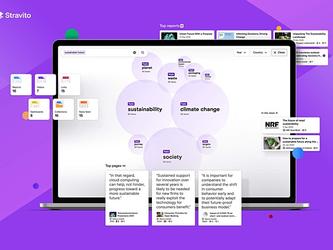Put insights in the spotlight

Consumer and market insights have become increasingly central to business operations across industries, allowing enterprises to truly understand and react to their customers’ ever-changing behaviours and preferences. Amid this growth, the optimisation and automation of research processes has been critical, allowing enterprises to quickly gather meaningful data from disparate sources and enabling them to make more informed decisions.
The ability to easily store, discover and share insights is vital here. Not only can geographical or departmental silos greatly restrict the flow of information and duplicate research, taking time and energy away from other priorities, but, fundamentally, insights only remain effective if they are placed in the hands of those who can drive organisational change.
How can teams maximise the impact of insights within their organisation and how can technology such as artificial intelligence (AI) support the adoption of an insights-led culture?
While I myself am not an insights leader in the traditional sense, I can share some learnings I’ve picked up from several conversations with clients and industry leaders on the strategies they’ve implemented to elevate the role of insights throughout their business, including how technology has supported the transition.
From gatekeeper to business partner
Historically, many insights teams have been perceived as the gatekeepers of information, managing access, in addition to the analysis, of research and insights. Yet, the transition to view insights teams as strategic business partners can greatly benefit multiple areas of an organisation. Particularly as a primary goal of insights teams is to act as the consumer champion, ensuring any business decisions reflect their real-time needs.
Technology, such as insights platforms, can help teams to disseminate actionable information with great speed, while also providing a centralised space to both store insights and collaborate – developing insights-led projects and campaigns.
These tools combined with a consultative approach can help various other departments and business units understand how insights drive value at a micro, meso and macro level.
Storytelling also plays an integral role, with clearly defined insights narratives helping to influence decision making through inspiration and engagement. And again, technology can greatly assist with helping teams to effectively find accurate and relevant insights that tell a concise story.
Challenging the status quo
Many of the best leaders seek to improve their teams, processes and business models as well as their own individual performance.
Insights professionals can maximise their effectiveness by mirroring this behaviour and using insights to work directly with global teams to challenge traditional business processes and attitudes. It’s easy to recognise that insights can help answer questions, but they can also be critical in helping figure out what questions need to be asked. As a representative of customers’ needs, insights teams are well-positioned to ask difficult internal questions that are backed by hard data.
With their deep understanding of the customer, insights professionals have a unique opportunity to align stakeholders by connecting the dots across departments or teams. Much like a chief executive who maintains a company-wide lens, insights teams can help multiple groups use insights to drive change within departments and across business functions. Weaving insights into everything from finance to supply chain management to research and development encourages strategic alignment.
Making insights accessible
Yet, informed decisions require speedy access to relevant information, which can be challenging if the technology used to manage insights creates bottlenecks.
That’s why it’s essential for organisations to make their insights available through human-centric, user-friendly technology that people actually enjoy using. Insights platforms should be able to automate repetitive tasks and use technology such as AI to reduce the steps required to reach conclusions, which in turn can help organisations nurture and unlock expertise, ensuring that the full value of insights is realised.
An easy-to-use and enjoyable interface that can make or break the success of a company’s insights platform integration. After all, there is no point in implementing technology that is feature-rich if the user experience is poor, especially as investing in software for your company is only worth it if employees log in and use it frequently.
When insights teams select technology that helps the organisation move forward, they can become trailblazers, promoting digital transformation even further.
Many forward-looking insights teams are already engaged in some or all of the efforts and initiatives discussed here.
I believe the perceived value of insights teams will continue to increase in proportion to the ever growing expansion and importance of their capabilities and interactions with disparate stakeholders. That technology will continue to augment and elevate human expertise along the way further ensuring insights remain activated, alive and in use.
Thor Olof Philogène is founder and chief executive at Stravito

We hope you enjoyed this article.
Research Live is published by MRS.
The Market Research Society (MRS) exists to promote and protect the research sector, showcasing how research delivers impact for businesses and government.
Members of MRS enjoy many benefits including tailoured policy guidance, discounts on training and conferences, and access to member-only content.
For example, there's an archive of winning case studies from over a decade of MRS Awards.
Find out more about the benefits of joining MRS here.













0 Comments